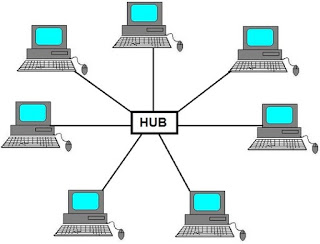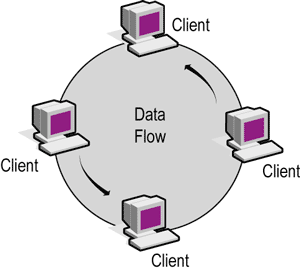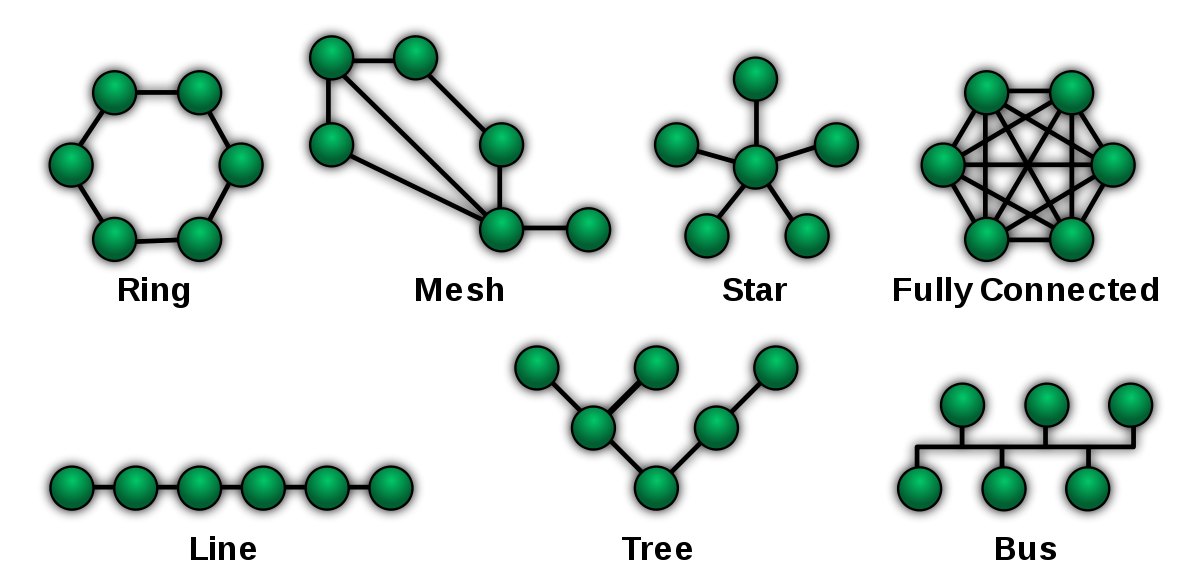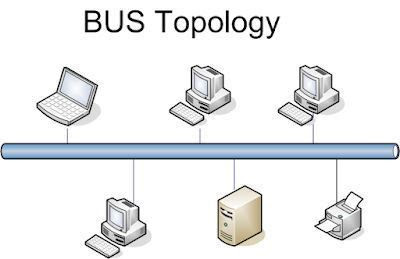Network Topology Types with Diagrams
What is Topology
Network topologies describe the ways in which the elements of a network are mapped. They describe the physical and logical arrangement of the network nodes. The physical topology of a network refers to the configuration of cables, computers, and other peripherals

Types of Network Topologies with Figures
1. Bus Topology
Bus Topology in which all of the nodes of the network are connected to a common transmission medium which has exactly two endpoints (this is the “bus”, which is also commonly referred to as the backbone, or trunk) – all data that is transmitted between nodes in the network is transmitted over this common transmission medium and is able to be received by all nodes in the network virtually simultaneously.
The two endpoints of the common transmission medium are normally terminated with a device called a terminator that exhibits the characteristic impedance of the transmission medium and which dissipates or absorbs the energy that remains in the signal to prevent the signal from being reflected or propagated back onto the transmission medium in the opposite direction, which would cause interference with and degradation of the signals on the transmission medium.
Advantages of Bus Topology
- It is Cheap, easy to handle and implement.
- Require less cable
- It is best suited for small networks.
Disadvantages of Bus Topology
- The cable length is limited. This limits the number of stations that can be connected.
- This network topology can perform well only for a limited number of nodes.
2. Star Topology
Star Topology in which each of the nodes of the network is connected to a central node with a point-to-point link in a “hub” and “spoke” fashion, the central node being the “hub” and the nodes that are attached to the central node being the “spokes” (e.g., a collection of point-to-point links from the peripheral nodes that converge at a central node) – all data that is transmitted between nodes in the network is transmitted to this central node, which is usually some type of device that then retransmits the data to some or all of the other nodes in the network, although the central node may also be a simple common connection point without any active device to repeat the signals.
Advantages of Star Topology
- Easy to manage
- Easy to locate problems (cable/workstations)
- Easier to expand than a bus or ring topology.
- Easy to install and wire.
- Easy to detect faults and to remove parts
Disadvantages of Star Topology
- Requires more cable length than a linear topology.
- If the hub or concentrator fails, nodes attached are disabled.
- More expensive because of the cost of the concentrators.

3. Ring Topology
Ring Topology in which each of the nodes of the network is connected to two other nodes in the network and with the first and last nodes being connected to each other, forming a ring – all data that is transmitted between nodes in the network travels from one node to the next node in a circular manner and the data generally flows in a single direction only.
Advantage of Ring Topology
- Very orderly network where every device has access to the token and the opportunity to transmit.
- Easier to Mange than a Bus Network
- Good Communication over long distances • Handles high volume of traffic
Disadvantages of Ring Topology
- The failure of a single node of the network can cause the entire network to fail.
- The movement or changes made to network nodes affects the performance of the entire network

4. Mesh Topology
Mesh Topology in which each of the nodes of the network is connected to each of the other nodes in the network with a point-to-point link – this makes it possible for data to be simultaneously transmitted from any single node to all of the other nodes.
The physical fully connected mesh topology is generally too costly and complex for practical networks, although the topology is used when there are only a small number of nodes to be interconnected.
Advantage of Mesh Topology
- No traffic problem as there are dedicated links.
- It has multiple links, so if one route is blocked then other routes can be used for data communication.
- Points to point links make fault identification easy.
Disadvantage of Mesh Topology
- There is mesh of wiring which can be difficult to manage.
- Installation is complex as each node is connected to every node.
- Cabling cost is high
5. Tree or Hierarchical Topology
Tree (or hierarchical) Topology in which a central “root” node (the top level of the hierarchy) is connected to one or more other nodes that are one level lower in the hierarchy (i.e., the second level) with a point-to-point link between each of the second level nodes and the top level central “root” node, while each of the second level nodes that are connected to the top level central “root” node will also have one or more other nodes that are one level lower in the hierarchy (i.e., the third level) connected to it, also with a point-to-point link, the top level central “root” node being the only node that has no other node above it in the hierarchy – the hierarchy of the tree is symmetrical, each node in the network having a specific fixed number, f, of nodes connected to it at the next lower level in the hierarchy, the number, f, being referred to as the “branching factor” of the hierarchical tree.
Advantages of a Tree Topology
- Point-to-point wiring for individual segments.
- Supported by several hardware and software vendors.
- All the computers have access to the larger and their immediate networks.
Disadvantages of a Tree Topology
- Overall length of each segment is limited by the type of cabling used.
- If the backbone line breaks, the entire segment goes down.
- More difficult to configure and wire than other topologies.
6. Hybrid Topology
The hybrid topology is a type of network topology that is composed of one or more interconnections of two or more networks that are based upon different physical topologies mentioned above
Advantages of a Hybrid Topology
- It is extremely flexible.
- It is very reliable.
Disadvantages of a Hybrid Topology
- Expensive
Original content published @ Telecom NEWs





